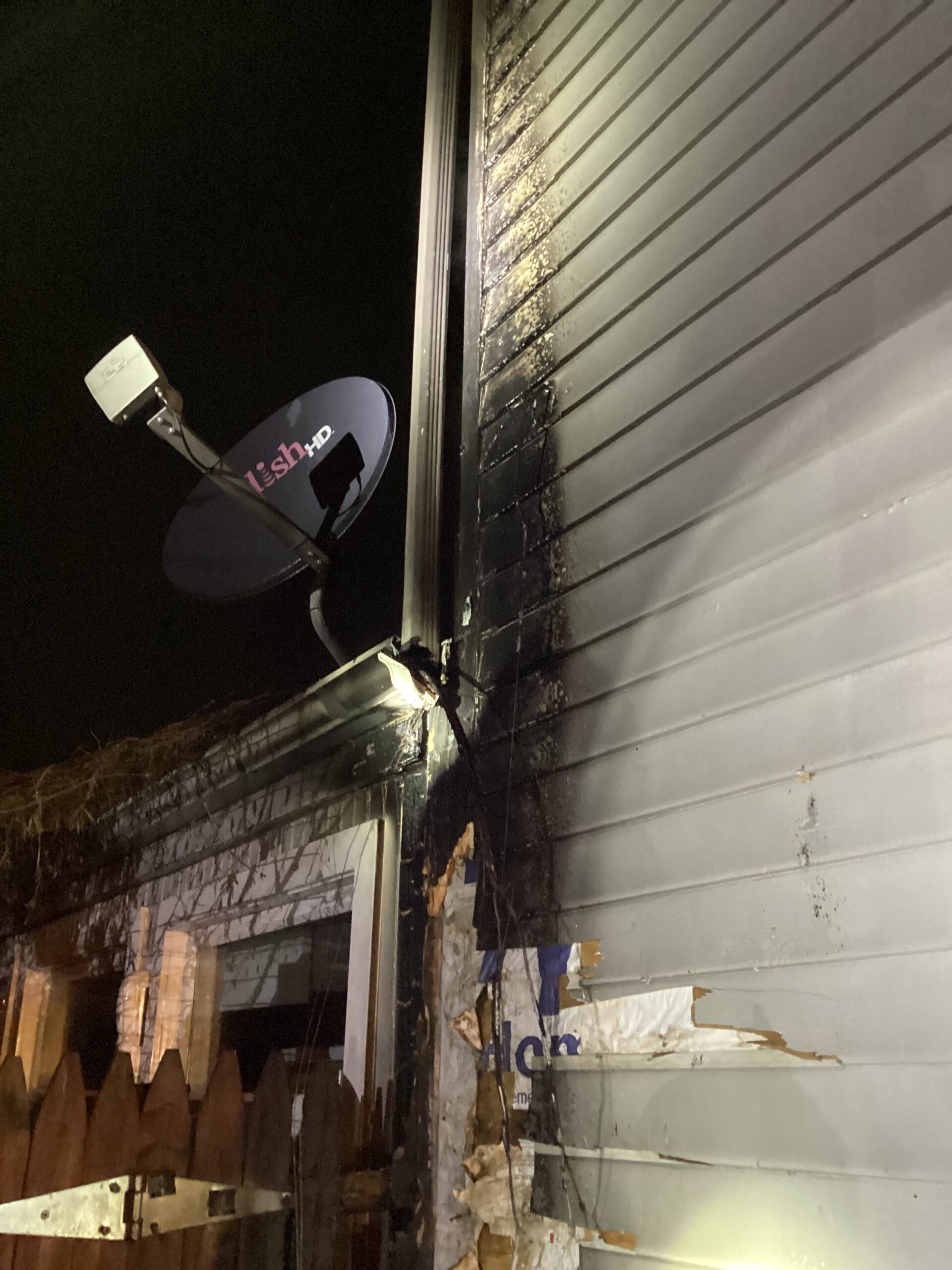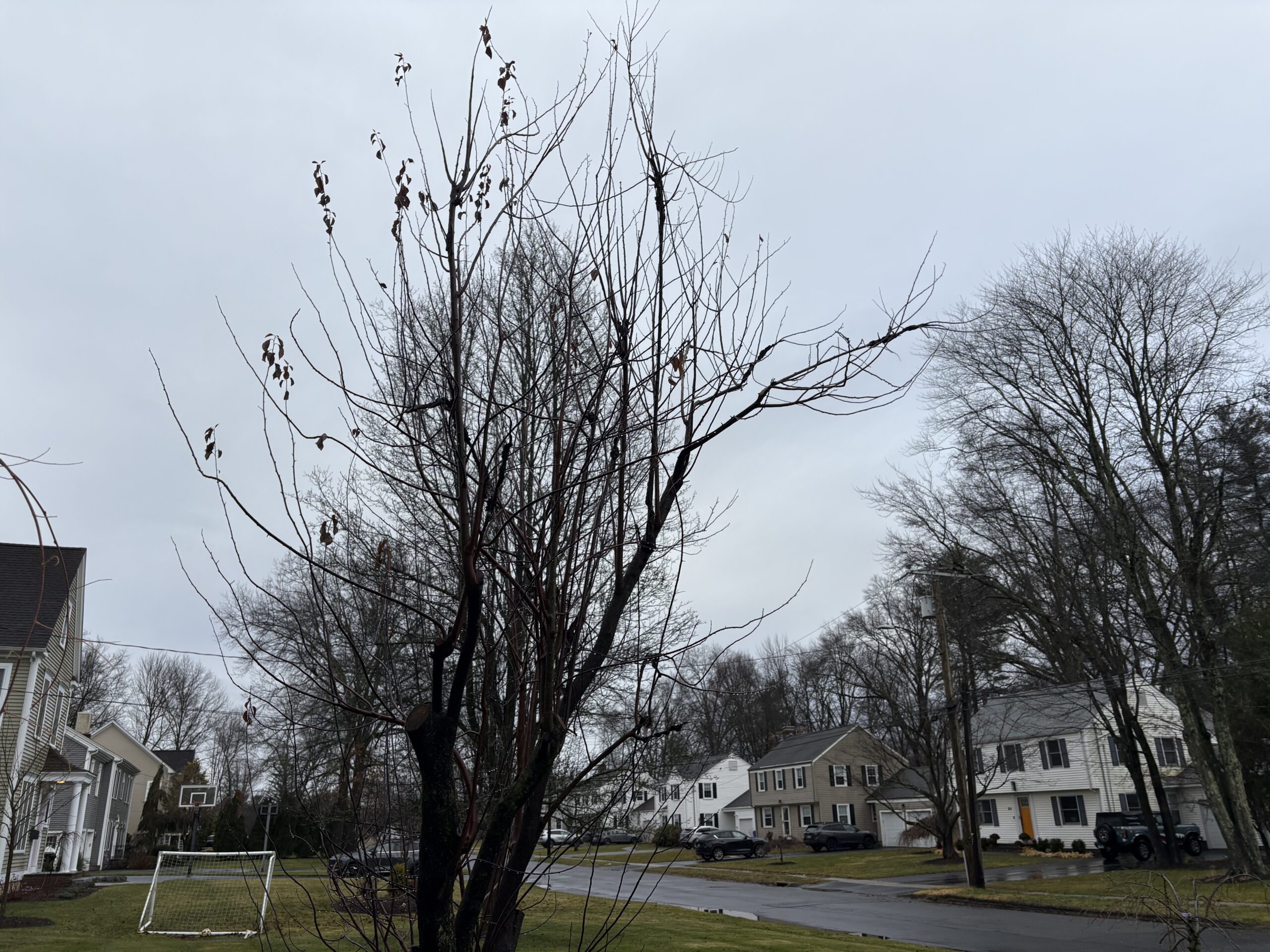From the West Hartford Archives: Westwood Road

Audio By Carbonatix
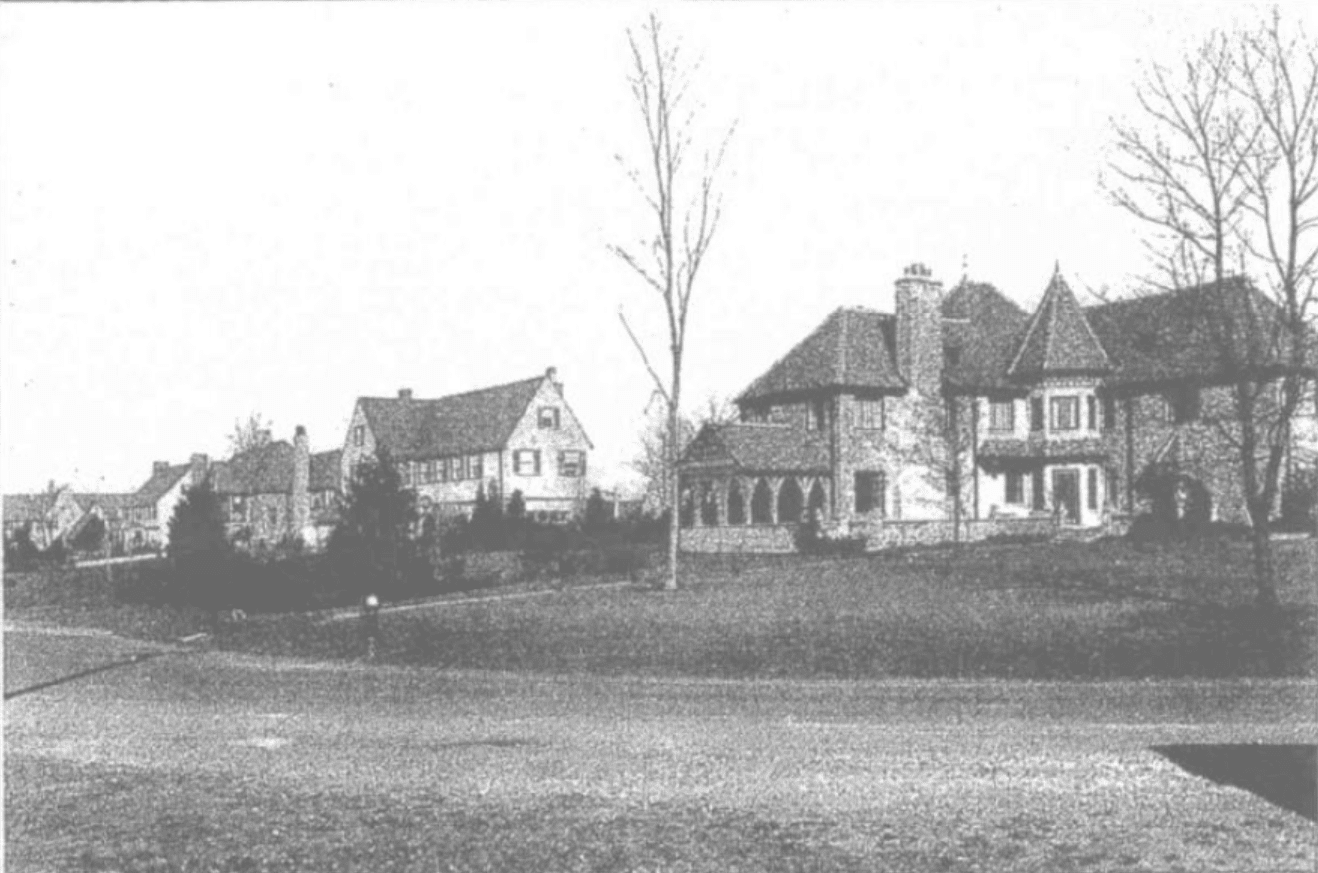
Westwood Road, 1929. Courtesy of Noah Webster House & West Hartford Historical Society
Historian Jeff Murray takes a look into West Hartford’s past to uncover some surprising information, stir up some memories, or reflect on how much life has changed – or hasn’t changed at all. Enjoy this week’s ‘From West Hartford’s Archives’ …
By Jeff Murray
This photograph was taken sometime after 18 Westwood Road was built in 1929 and before the spring of 1930 when the book it was published in was released. Based on the lack of leaves on the trees, it could be late fall or early winter. This view shows the bend on Westwood Road west of Ledyard Road.
The principal owner of land in this vicinity decades before was the Talcott family, who lived just south of Simsbury Road where the Hartford Golf Club house is today. Known as “Old Walnut Hill” farm (apparently), it was in the family since at least the early 1800s, if not longer. Old maps show the Talcott name in one form or another: the “Misses Talcott” in 1855, “Mrs. John Talcott” in 1896, and “John L. Talcott” after that.
John Ledyard Talcott, Jr. was the last member of the family to own the land before it was sold off and subdivided and it is through his middle name that Ledyard Road gets its name. Born on April 28, 1876, he was a direct descendant of John Talcott, one of the founders of Hartford. He grew up in Buffalo, New York, and at the age of 18 married his first wife Etta, who died just a few years later. Widowed with a 5-year-old daughter, Mildred, he moved into the house of his mother, who herself had lost her husband years before.
The family was wealthy enough that John could raise his daughter and not have to work another job. Around 1907, he married a second time and moved with his wife and daughter to West Hartford, where his parents had owned the farm off Simsbury Road. Of course, it wasn’t just for our wonderful farmland. He came here to own a theater in Hartford.
The 1910s were a prime time for large theaters, especially in a city like Hartford. Early theaters had emerged in the early 1900s, known as “nickelodeons,” offering short films for just five cents. These were affordable entertainments for working-class audiences. Rapid urbanization in Hartford in this era (and the exploding suburbs) brought eager audiences. As urban life became more fast-paced and stressful, movies and burlesque shows tapped into the public’s appetite for escapism and the silent films of the day increasingly became narrative-driven, complex, and more engaging. Powerful theater owners and producers, especially in New York City, created regional and nationwide networks to supply theaters with a steady stream of content.
In the early 1910s, Hartford saw the introduction of a number of theaters – both moving pictures and burlesque. The city hosted many different forms of entertainment, so John Talcott was capitalizing at the right time.
John Talcott was president of the new Strand Theater that opened in 1914 across from G. Fox & Co (in fact, the Strand was one of the last old movie theaters still operating when it closed in 1970). It was built on Talcott family property on Main Street and represented “an immense amount of money,” according to the Hartford Courant on July 23, 1914, when it was under construction.
The couple aimed to bring both music and pictures, installing a three-manual concert pipe organ. The manager of the house was William True, secretary of the company and future neighbor in West Hartford. Unusually for the time, John’s wife, Kathryn, was vice-president of the venture. Women in leadership roles, especially in high-profile organizations like a theater, were exceptions rather than the rule, but generally, women officers were more likely to be wealthier and influential in social circles like this one.
The couple lived on Albany Avenue in West Hartford, just west of the city line. In 1920, the stockholders of the Strand Theater Company under President Talcott voted to dissolve and William True, the manager, took full control of the house. Not long after, John’s second wife, Kathryn, died in Westbrook. A third marriage was in the works by the next spring.
In the six years of theater ownership, John Talcott embarked on land development on the family farm off Albany Avenue. In the summer of 1916, he proposed to the town a new street – Ledyard Road – which would extend north from Albany Avenue and connect to Simsbury Road. The layout was approved by the town and pieces of land were sold off to individual owners for new homes.
That fall, the Hartford Golf Club had sold a significant amount of land from their course along Sycamore Road and used the money to buy 82 acres from John Talcott north of Albany Avenue for a new course on the Talcott estate. As a result, Talcott’s Ledyard Road was reconfigured away from Simsbury Road and instead wound its way further west. The first houses were 17 and 28 Ledyard, just about halfway between Albany Avenue and the curve.
In the middle of this development, John’s daughter Mildred married Wright Poindexter, a clerk with the Hartford Fire Insurance Company, and the couple lived on Ledyard Road for a short time before moving to Auburn Road. Every new homeowner on the block was a president or a secretary of a regional (or national) company. By 1923, most of Ledyard Road up to the first curve was subdivided and either built on or planned to be built on.

pproximate landholdings of the Talcott family, with Ledyard Road as the spine; 1923 Map
In the fall of 1925, Westwood, Inc. was incorporated as a real estate company by primarily West Hartford residents – President H. Terry Morrison was on the town council and Porter B. Chase lived on Prospect Avenue near Fern Street. They set out to buy a $60,000 tract from John Talcott on the west side of Ledyard Road.
Once this transfer was finalized, they laid out Westwood Road off of the curve of Ledyard Road and submitted plans to the town in the spring of 1926 for a new housing tract that would extend north and connect with Ledyard again (or what we now consider Mohawk Drive). Some of the lots in this tract was bought up by the Hartford Golf Club in its expansion and others were built on by the same builders – the Lowe Brothers or Louis W. Slocum, who built a number of houses on Westwood.
The Town of West Hartford accepted Westwood Road as a public road in April 1927 and by 1928 the Hart, Kneeland & Poindexter real estate company took over management of the tract. If that last name sounds familiar, kudos – one of the partners, Edgar Poindexter, was actually the brother of Wright Poindexter, John Talcott’s son-in-law. So in a roundabout sort of way, ownership continued through the family.
John Talcott finally sold the remainder of the estate (about 70 acres) to the Skinner Brothers in 1928 for $200,000, running north through to Simsbury Road in the western portion of what is now part of the Hartford Golf Club. They planned for long winding roads adjacent to the golf course, but that never came to be.
Like many of West Hartford’s residential neighborhoods, generational farms were carved up by the last family owner or sold in pieces to hungry real estate developers capitalizing on the building boom of the 1920s. It seems fitting that a man from a wealthy New York family (albeit Buffalo) would lead this area down a path of wealthy houses. The neighborhood to the west, also a generational family farm in the Root family, would be built up by other companies and builders in the 1920s, encompassing streets like Colony Road and Norwood Road.
The pictured house, a 1929 Norman French house built for James T. Soby, is a perfect example of the suburban wealth of this area of West Hartford – one of the distinguishing features was the landscape designed by Desmond, Eddy, and Warner. There were sunken gardens, terraces, promenades, courts, lawns, and flower beds, all of which contributed to this imposing house designed by Lester B. Scheide and built by R. F. Jones Company.
Soby, a publisher and influential art patron, was just 22 years old when this house was built. “Paris is the art center of the world,” he once said after a trip to France. It evokes a sort of familiarity with the 1920s atmosphere we feel from books like The Great Gatsby, steeped in visual richness and grandeur, but overly opulent and driven by status.
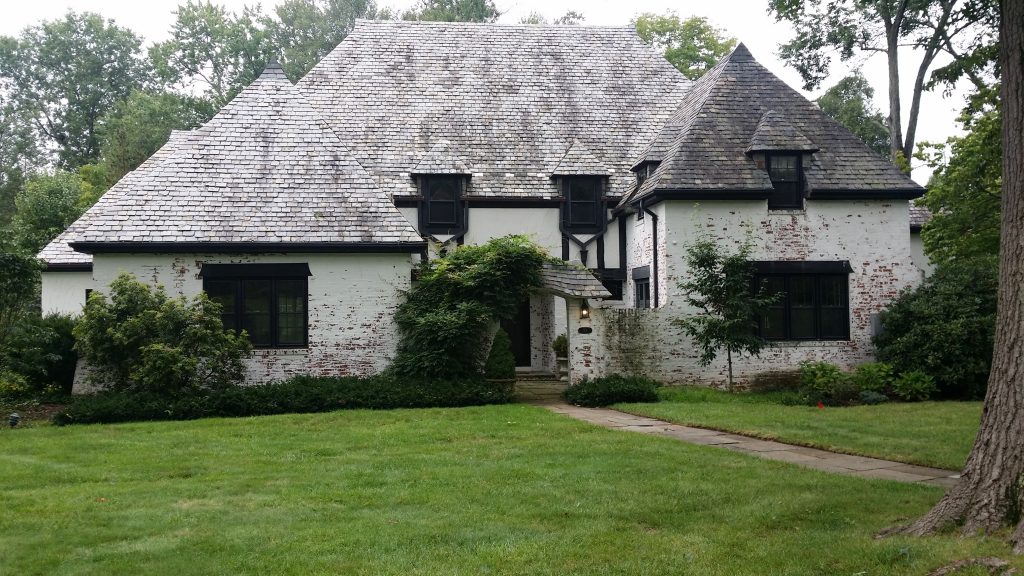
Westwood Road, 2018. Photo credit: Ronni Newton (we-ha.com file photo)
American elites were obsessed with European art, culture, and style, and they often came to our most precious suburban neighborhoods here. There certainly was not the same type of undercurrent of emptiness or social decay north of Albany Avenue expected from 1920s novels, but perhaps there is something to be said about the connection. Gatsby’s Long Island neighborhood too had transitioned from pastoral land to grand estates and from old values to new money. The unique architecture and rich history here continue to impress though.
Nine years ago, the Noah Webster House & West Hartford Historical Society featured the Hartford Golf Club neighborhood in a historical house tour, including a home on Ledyard Road. If Westwood Road tells us anything, it’s that there is an inherent beauty in fully understanding our past alongside preserving it.
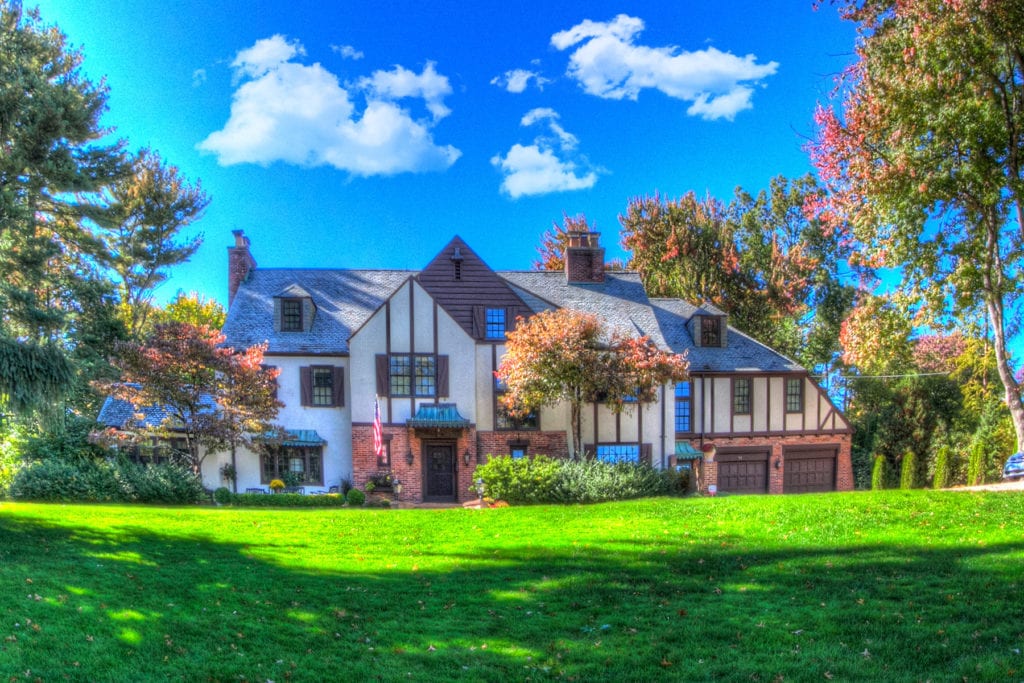
91 Ledyard Rd. Photo credit: Patty Swanson / Patty Swanson Photography (we-ha.com file photo)
Jeff Murray was born and raised in West Hartford and has been involved with the Noah Webster House & West Hartford Historical Society since 2011 when he was a high school student and won the Meyer Prize for his essay on local history. Jeff routinely volunteers as local history researcher uncovering information for numerous museum programs such as the West Hartford House Tour and West Hartford Hauntings. Jeff works as a data analyst at Pratt & Whitney.
Like what you see here? Click here to subscribe to We-Ha’s newsletter so you’ll always be in the know about what’s happening in West Hartford! Click the blue button below to become a supporter of We-Ha.com and our efforts to continue producing quality journalism.


